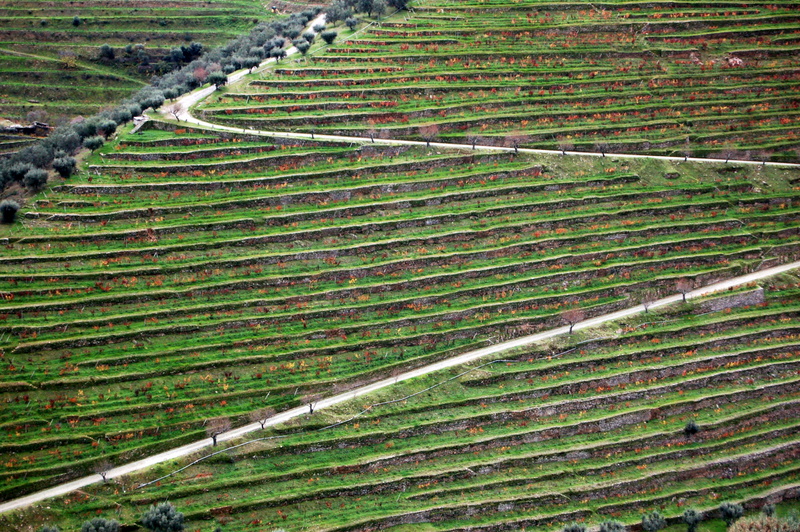The beginning of winter is a questionable time to visit a wine region. The harvest has long been concluded. The bright green leaves of the grapes are gone, and the vines are being pruned. Open hours are shortened everywhere, and reservations are required at the wineries even more so than in the summer. In spite of these obstacles, we had a lovely few days enjoying the landscape, driving around the Douro, and nosing into villages and quintas (wine estates).
The ancient wine region is defined by the Douro river that runs through it. Wine has been produced here since Roman times, but the port wine boom in the 1700’s fueled the development of the valley. Early vintners carved out hundreds of layers of terraces in the incredibly steep and rocky mountainsides. Through the years, every square meter of land in the prized Alto Douro region has been terraced creating an astoundingly beautiful visual testament to hundreds of years of manual labor. In November, you are treated to waves of golden yellow and crimson grape leaves climbing over bright green moss and a carpet of grass brought on by the beginnings of the rainy season.
Equally impressive are the carved out roads that hug the river and climb through the valleys of its many tributaries. Dotting the mountain tops and fertile valleys are scores of small villages. Our rules of thumb in the Douro is that if you can see a village, there’s a road to get there, but it’s going to take a while and will inevitably be filled with narrow blind turns, one-lane sections, and sheer drop-offs with beautiful vistas. Happily in November, there aren’t many cars on the road which allows us to stop in the middle of if when we find the next best view.
The villages are a good reason to get out of the car instead of endlessly driving around enjoying the views. Each has its own character and its own cafe. We stopped for coffee in Sao Joao de Tarouca next to a 900-year old Cistercian monastery with a still working food garden, old stone water canals, and a decadent church coated with hand-painted tiles. We bought bread fresh from the wood charcoal fired hearth in Favaios. We wandered the cobblestone streets looking for a Roman-era fountain in Trevoes. After driving 30 minutes down winding roads, we were disappointed that Quinta Nova closed for the season in October. Thankfully, they post their hiking trails outside, and we enjoyed a slightly muddy 2-hour walk through their vineyards.
Not realizing how nice it would be in November, we originally planned to stay only 3 nights in the Douro Valley. Thankfully, very few people also realize it’s nice in November, and we were able to extend our stay at the charming Casa Cimeira for an additional 2 nights surrounded by vineyards and views of the Douro. The gratuitous glasses of the house’s port and home-cooked meals accompanied by bottomless glasses of the house’s DOC table wine certainly helped. We even managed to make a few reservations at wineries, but more on that later.

Leave a Reply